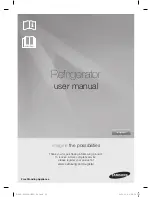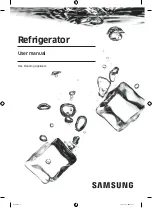
T-340
3–10
3.5 Refrigeration Circuit
3.5.1
Standard Operation
Starting at the compressor (see
) the suction gas is compressed to a higher pressure and temperature.
The refrigerant gas flows through the discharge line and continues into the air-cooled condenser. When operating
with the air-cooled condenser active, air flowing across the coil fins and tubes cools the gas to saturation tempera
-
ture. By removing latent heat, the gas condenses to a high pressure / high temperature liquid and flows to the
receiver, which stores the additional charge necessary for low temperature operation.
When operating with the water-cooled condenser active (see
), the refrigerant gas passes through the
air-cooled condenser and enters the water-cooled condenser shell. The water flowing inside the tubing cools the
gas to saturation temperature in the same manner as the air passing over the air-cooled condenser. The refrigerant
condenses on the outside of the tubes and exits as a high temperature liquid. The water-cooled condenser also
acts as a receiver, storing refrigerant for low temperature operation.
The liquid refrigerant continues through the liquid line, the filter drier (which keeps refrigerant clean and dry) and
the economizer (not active during standard operation) to the electronic expansion valve (EEV).
As the liquid refrigerant passes through the variable orifice of the EEV, the pressure drops to suction pressure. In
this process some of the liquid vaporizes to a gas (flash gas), removing heat from the remaining liquid. The liquid
exits as a low pressure, low temperature, saturated mix. Heat is then absorbed from the return air by the balance of
the liquid, causing it to vaporize in the evaporator coil. The vapor then flows through the suction tube back to the
compressor.
On systems fitted with a water pressure switch, the condenser fan will be off when there is sufficient pressure to
open the switch. If water pressure drops below the switch cut out setting, the condenser fan will automatically start.
During the standard mode of operation, the normally closed digital unloader valve (DUV) controls the system refrig
-
erant flow and capacity by loading and unloading the compressor in frequent discrete time intervals. If the system
capacity has been decreased to the lowest allowable capacity with the DUV, the unit will enter a trim heat mode of
operation, during which the controller will pulse the evaporator heaters in sequence with the compressor digital sig
-
nal in order to absorb the excess capacity.
3.5.2
Economized Operation
In the economized mode (see
) the frozen and pull down capacity of the unit is increased by sub-cooling
the liquid refrigerant entering the electronic expansion valve. Overall efficiency is increased because the gas leaving
the economizer enters the compressor at a higher pressure, therefore requiring less energy to compress it to the
required condensing conditions.
Liquid refrigerant for use in the economizer circuit is taken from the main liquid line as it leaves the filter drier. The
flow is activated when the controller energizes the economizer solenoid valve (ESV).
The liquid refrigerant flows through the ESV to the expansion valve internal passages, absorbing heat from the liq
-
uid refrigerant flowing to the electronic expansion valve. The resultant “medium” temperature/pressure gas enters
the compressor at the economizer port fitting.
When the control air temperature falls to 2.0°C (3.6°F) above set point, the DUV unloads the compressor’s scroll
and begins to reduce the capacity of the unit. Percentage of the unit capacity is accessed through code select 01
(Cd01). For example, if Cd01 displays 70, it indicates that the compressor is operating unloaded with the DUV
engaged 30% of the time.
3.5.3
Electronic Expansion Valve
The microprocessor controls the superheat leaving the evaporator via the electronic expansion valve (EEV), based
on inputs from the evaporator pressure transducer (EPT). The microprocessor transmits electronic pulses to the
EEV stepper motor, which opens or closes the valve orifice to maintain the superheat set point.
















































